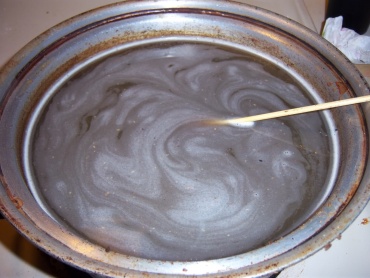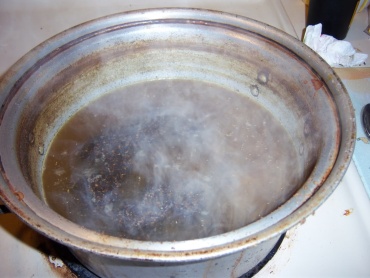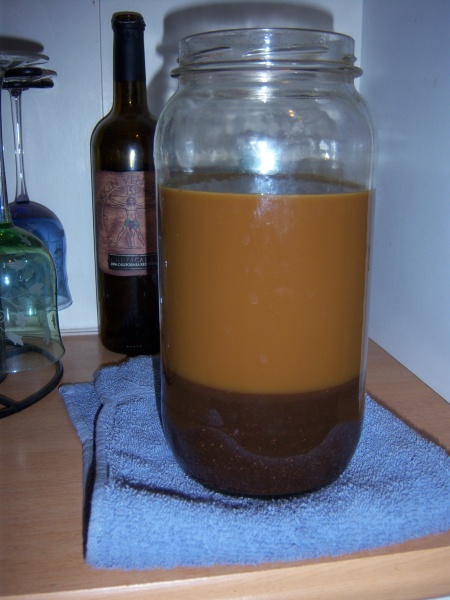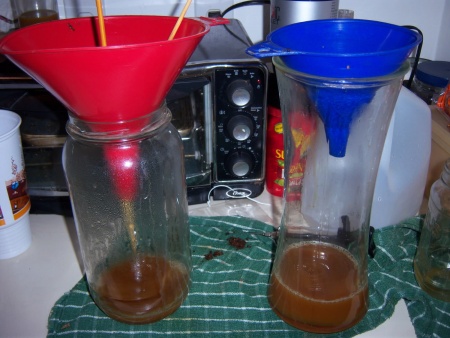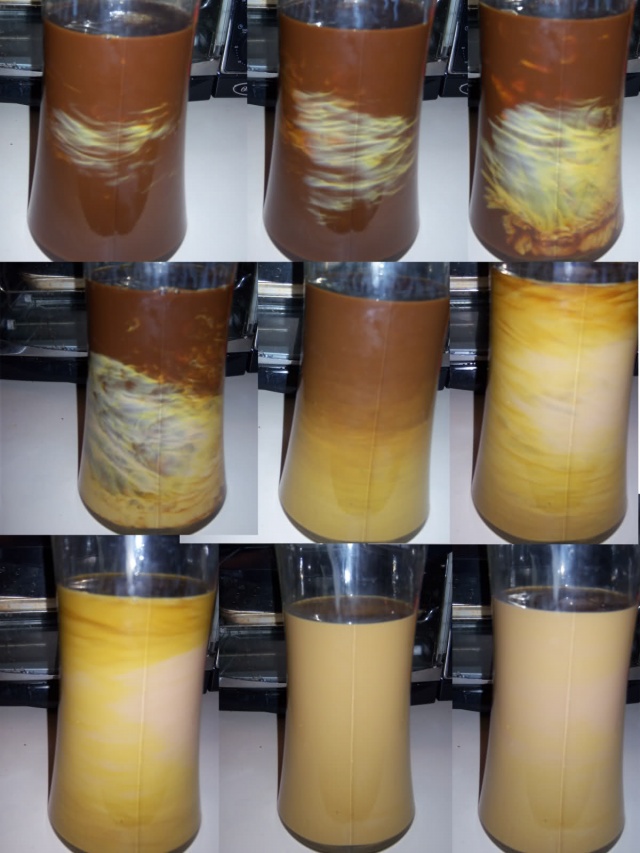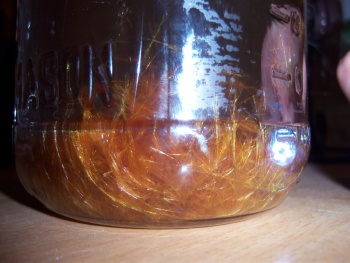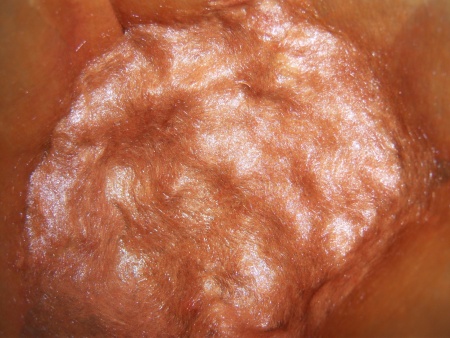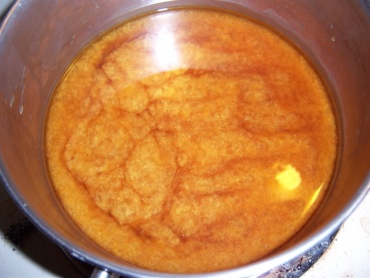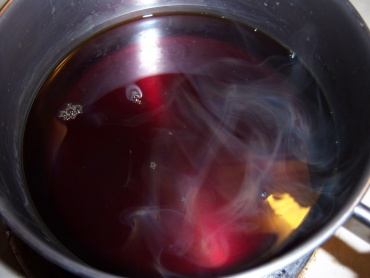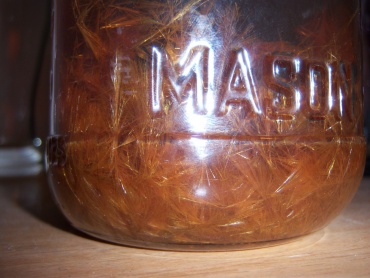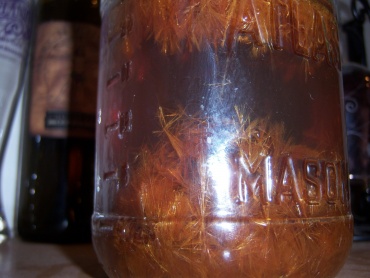The Tao of Rue Extraction
| Note: | This page is a transcription of Melodic Catastrophe's Tao of Rue Extraction Tek [1]. The content is to remain accurate as such. |
Contents
Initial Notes
There really isn't anything new in this Tek, it's just refining what is already known. This is more about streamlining the process and making it easier to work with. Please take the time to review and integrate the existing harmala teks so you have a general idea of the process.
- Harmalas Extraction and Separation Guide
- Easy Caapi Vine Alkaloid Extraction Guide
- Phlux's Telepathine Tek
Background
I've been doing rue extractions for a little over a year now. Compared to extracting spice, it's quite an undertaking. There is a lot of hard work involved and it's a very time consuming process. Until recently, my rue extractions have been kind of hit and miss. While I always end up with something, my yields and methodology left a lot to be desired. This tek helps keep things rolling with the minimal amount of waste possible and great final yields.
Credits
- Kudos to Endlessness for putting together the harmala extraction and separation guide[2] and to everyone who contributed to it.
- Kudos to Phlux- for his contribution to the Manske process[3]. It definitely leads to a far superior product in the end.
- Kudos to Gibran2 for his work with caapi extraction[4].
- Kudos to everyone who has been pioneering harmala extractions this whole time.
Method
Step 1
Start by freezing the seeds for a day or so and grind them. Freezing them makes it easier to grind them.
Step 2
Boil the seeds with a dash of vinegar, citric or fumaric acid. This is where I use the large pot and I fill it to just under the rim with the seeds, water and acid. I then let it boil down to where you can see the water is just covering the seeds. It usually takes about 1.5 – 2 hours. (I keep it on a pretty hard boil during this stage. Not so much on the reducing stage.)
Step 3
From here you can do one of two things:
3a
If you're the patient type, then dump everything into one of the large collection containers and allow it to settle at least overnight but longer won't hurt.
Then decant all of the crystal clear yellow water off of the top and run it through a coffee filter or two just to make sure that all insolubles are removed.
You can then run all of the plant matter on the bottom through a strainer and filter it several times to get all of the goodies or just dump it back into the pot with more fresh water and acid for at least 2 more boils but it won't hurt anything to boil it more times. If you decide to filter the plant matter at the bottom, refer to step 3b for filtering assistance.
Tip: Let the seeds settle for awhile before pouring the liquid out of the pot.
3b
If you want to keep the extraction rolling without waiting overnight for everything to settle or if you are filtering the plant matter at the bottom, than this is where your two large collection jars and funnels will come into play.
You want to begin the filtering process by first running the solution through the metal strainer to get the majority of the solids out of the tea. You'll want to add these solids back into the pot with fresh water and acid and continue to the boiling process while you filter the rest of the solution.
After you strain it you'll want to continue the filtering process by packing VERY loose cotton balls into the funnel. You want enough so that the cotton won't go through the hole when you add the liquid, but not enough to restrict the flow much.
These first few filter passes take the longest due to the amount of sludge that rue produces. This is why I prefer to use two funnels and collection jars. When the first funnel gets clogged, I decant the remaining liquid out and add it to the second collection jar until it gets clogged. When the second funnel gets clogged, I add fresh cotton to the first funnel and decant/transfer the liquid back over. I keep moving the tea back and forth until everything goes through and then I start the process over with tighter cotton.
Once it passes through the tightest cotton easily I move onto coffee filters and do the same process. If one gets clogged, move it to the other funnel. It's a real pain to get rue filtered properly but if you put in the effort you will be rewarded in the long run.
"Impatience and improper Prep makes low quality medicine. Don't jump the gun, make something you can be proud of." - Dorge
Step 4
Once you have the solution filtered, it's time to reduce it. By this time you should have a pretty clear tea. Mydriasis has proven that this step isn't required but some prefer to do it anyway.
When I did my last extraction it worked out so that towards the end I had seeds boiling, solution filtering and another reducing at the same time. I would just bounce back and forth between each one, stirring or decanting. It worked out really well.
Step 5
After you have boiled, filtered and reduced at least 3 pulls/boils you want to perform the first freebase of the molecules. To do this, we'll make a lye or sodium carbonate solution. I don't mind using lye in this step because we're going to filter our alks and then redissolve them into some more vinegar to filter them some more. On the final base, I prefer to use sodium carbonate to keep things safe.
| Warning: | Lye can be very dangerous if not handled with RESPECT. Always wear gloves and proper eye protection when working with powerful bases. |
Once you make a basic solution you'll want to add it slowly to your tea while stirring. Keep adding it slowing while continuing to stir and you'll see the color changes starting to take place. Keep adding the base solution until everything goes milky. That milky color is your alkaloids precipitating out.
You'll want to let this rest at least a few hours but preferably overnight or longer so that all of your alks can settle to the bottom.
Once your alks have settled, you want to decant as much of the basic liquid as possible. From here you can redissolve them into some vinegar or you can rinse them with fresh water and decant again a couple of times. Each time you rinse it with fresh water it will lower the basic ph to safe handling levels.
Please refer to Gibran's Easy Caapi Vine Alkaloid Extraction Guide for more information on this process.
Step 6
Once you have your freebase alks, redissolve them in a minimal amount of fresh, hot vinegar or as The Day Tripper pointed out, a fumaric acid solution. Day Trippers fumaric acid approach leads to chunkier crystals later. Vinegar will lead to needle like crystals as pictured below.
Take a note of how many ml's you have. You'll take that same amount of fresh distilled water, boil it and saturate it with salt. Once it's completely saturated you want to filter it and add it to your alkaloid solution.
Allow this to cool at it's own pace.
Once it cools off completely you should start to notice crystals starting to form on the top of the water. They will continue to grow for awhile. I left some undisturbed for two days and got spikes over an inch long.
Step 7
Once you are confident that no more growth is taking place, filter the solution with a coffee filter to collect all of the needles.
| Note: | |
|---|---|
| Depending on how much salt, water and time was used, you may want to keep the filtered solution and reduce it some more to "push" any stray alkaloids out. |
Step 8
Redissolve your harmalas in a minimal amount of fresh hot water. It will take some heat (not too much) and time for everything to dissolve completely.
Step 9
Once everything is nice and dissolved, you'll want to run it through another coffee filter or two just to get rid of any final impurities. Now that it's nice and filtered, you'll want to do the manske in step 6 again. This time it will give you even purer crystals.
| Note: | |
|---|---|
| Once again, depending on how much salt, water and time was used, you may want to keep the filtered solution and reduce it some more to "push" any stray alkaloids out. |
Step 10
Once you're confident that the crystal growth has finished again, filter them through a coffee filter and redissolve them in hot water.
Step 11
It is now time to do your final basing. This time you want to use a sodium carbonate solution so your end product is food safe with the minimal amount of washing required. Do the exact same process as step 5 except if you want to separate the harmine from the harmaline you'll want to raise the ph to 8.75 and filter. This will give you approx 92% of the harmine. You really don't need a PH pen to do this, it's quite possible to do it by eye. After you filter, raise the ph of the solution again to get your harmaline and filter once again.
For more information on this process refer to the Harmalas Extraction and Separation Guide, step 17.
Step 12
Wash and dry your harmalas and enjoy!
Please refer to Gibran's Easy Caapi Vine Alkaloid Extraction Guide, Removing Excess NaOH, Salts etc for more info.
Reference
- ↑ The Tao of Rue Extraction[1]
- ↑ Harmalas Extraction and Separation Guide
- ↑ caapi manske xtal pics[2]
- ↑ Easy Caapi Vine Alkaloid Extraction Guide
